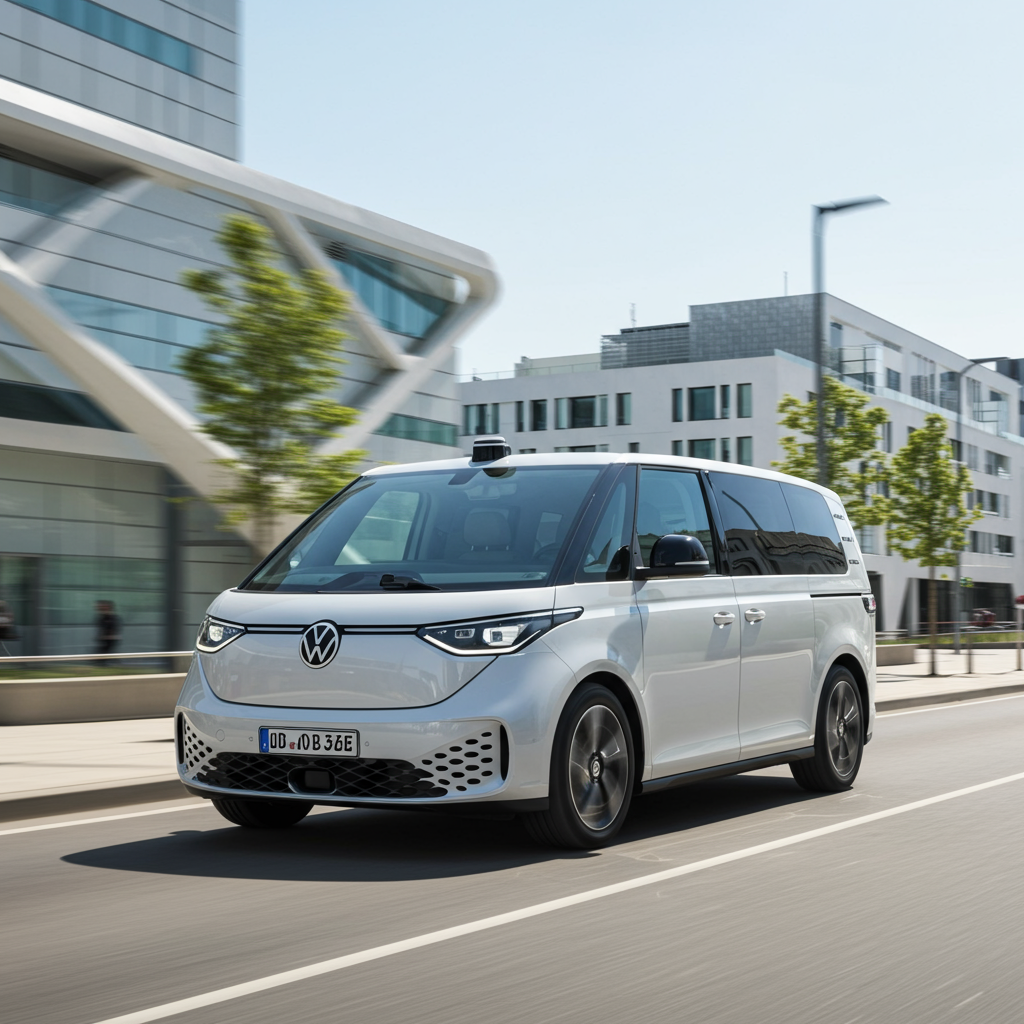Volkswagen’s journey into the world of fully autonomous mobility just hit a major milestone. Its mobility subsidiary, MOIA, has officially launched the ID. Buzz AD, marking VW’s first production vehicle specifically designed for self-driving mobility services. This isn’t just a van capable of driving itself; it’s the core component of a comprehensive package built to enable cities and companies to deploy driverless transit solutions quickly and at scale.
The ID. Buzz AD: More Than Just a Vehicle
The ID. Buzz AD is positioned by MOIA as a complete 360-degree mobility solution. It bundles the cutting-edge self-driving technology with essential tools for running a mobility fleet. This includes intelligent fleet management software, robust passenger support systems, and thorough operator training programs. The aim is to provide public and private transit providers with everything they need from a single source.
Volkswagen Group CEO Oliver Blume emphasized this integrated approach, stating, “Our driverless ID. Buzz shuttles are part of a fully connected 360-degree package… quickly scalable to fleet size on the road.” He sees this move as placing the Volkswagen Group among the leaders in the rapidly growing global market for autonomous mobility services.
Technology and Capability
At the heart of the ID. Buzz AD is the advanced self-driving system developed by Mobileye, integrated into the vehicle which meets automotive safety standards. MOIA complements this with its own Autonomous Driving Mobility-as-a-Service (AD MaaS) platform. This platform isn’t limited to vehicle autonomy; it manages the entire fleet, handles emergency scenarios, and can synchronize with popular ride-hailing applications.
The vehicle is equipped with a sophisticated sensor suite totaling 27 sensors, providing a full 360-degree view of its surroundings. This includes:
13 Cameras
9 LiDAR sensors
5 Radar sensors
Leveraging AI software for real-time decision-making, the system is designed to meet the requirements for Level 4 autonomy. This level typically means the vehicle can handle all driving tasks under specific conditions and within defined areas, with provisions for remote monitoring and human backup for rare or complex situations.
Rollout Plans and Future Service
MOIA plans a phased rollout for the autonomous ID. Buzz AD. Initial operations will begin in Hamburg, Germany, serving as a pilot before scaling up. The company is targeting a large-scale deployment across Europe and the United States starting in 2026.
Significantly, plans are already in motion for specific service launches. Uber has announced a partnership with Volkswagen to launch shared, electric, fully autonomous rides using the ID. Buzz AD in Los Angeles, California, beginning in early 2026. This highlights the practical application of MOIA’s service package in a major metropolitan area via a prominent mobility platform.
Supporting Fleet Operators
Recognizing the complexities of managing autonomous fleets, MOIA offers comprehensive support through its “Operator Enablement” package. This includes:
Fleet simulation
Operator training
Deployment assistance
- Live monitoring
- electrek.co
- www.uber.com
- www.designboom.com
- electrek.co
This integrated support is designed to empower operators to run the autonomous ID. Buzz AD service effectively across various environments, from dense urban centers to suburban and even rural areas.
MOIA CEO Sascha Meyer underlined the potential of this technology: “Mobility is a basic human need… Artificial intelligence opens entirely new opportunities to give people access to flexible, shared, comfortable, and affordable mobility.”
The launch of the ID. Buzz AD service builds on the Volkswagen Group’s broader commitment to electric mobility and sustainable transportation, furthering the modern evolution of their iconic microbus design into a driverless, connected future.


